New Urban Spaces: Urban Theory and the Scale Question Neil Brenner
Visit to download the full and correct content document: https://ebookmass.com/product/new-urban-spaces-urban-theory-and-the-scale-questi on-neil-brenner/
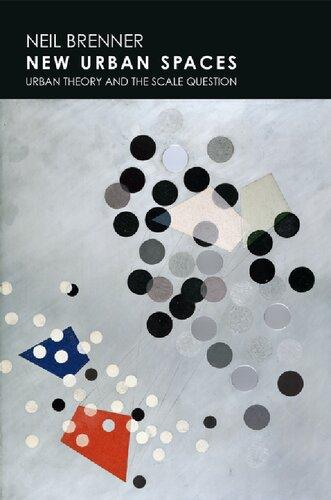
More products digital (pdf, epub, mobi) instant download maybe you interests ...
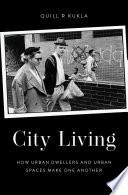
City Living: How Urban Spaces and Urban Dwellers Make One Another Quill R. Kukla
https://ebookmass.com/product/city-living-how-urban-spaces-andurban-dwellers-make-one-another-quill-r-kukla/
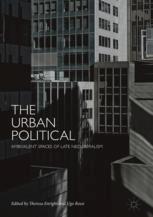
The Urban Political: Ambivalent Spaces of Late Neoliberalism 1st Edition Theresa Enright
https://ebookmass.com/product/the-urban-political-ambivalentspaces-of-late-neoliberalism-1st-edition-theresa-enright/
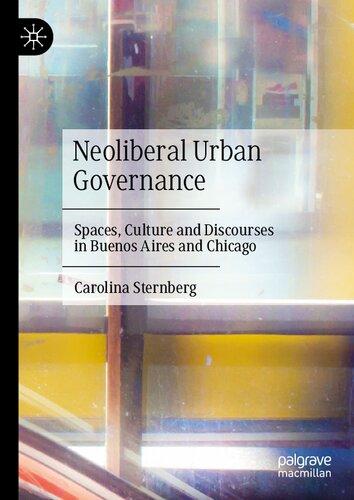
Neoliberal Urban Governance. Spaces, Culture and Discourses in Buenos Aires and Chicago Carolina Sternberg
https://ebookmass.com/product/neoliberal-urban-governance-spacesculture-and-discourses-in-buenos-aires-and-chicago-carolinasternberg/
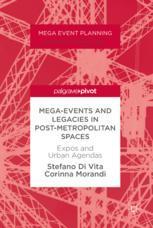
Mega-Events and Legacies in Post-Metropolitan Spaces: Expos and Urban Agendas 1st Edition Stefano Di Vita
https://ebookmass.com/product/mega-events-and-legacies-in-postmetropolitan-spaces-expos-and-urban-agendas-1st-edition-stefanodi-vita/
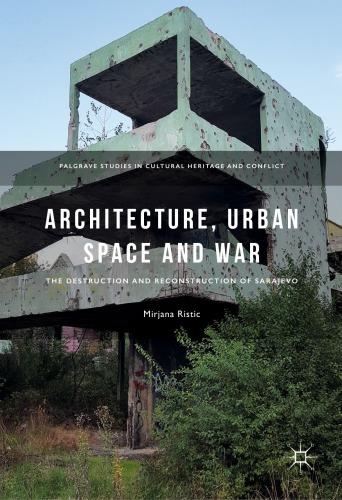
Architecture, Urban Space and War Ristic.
https://ebookmass.com/product/architecture-urban-space-and-warristic/
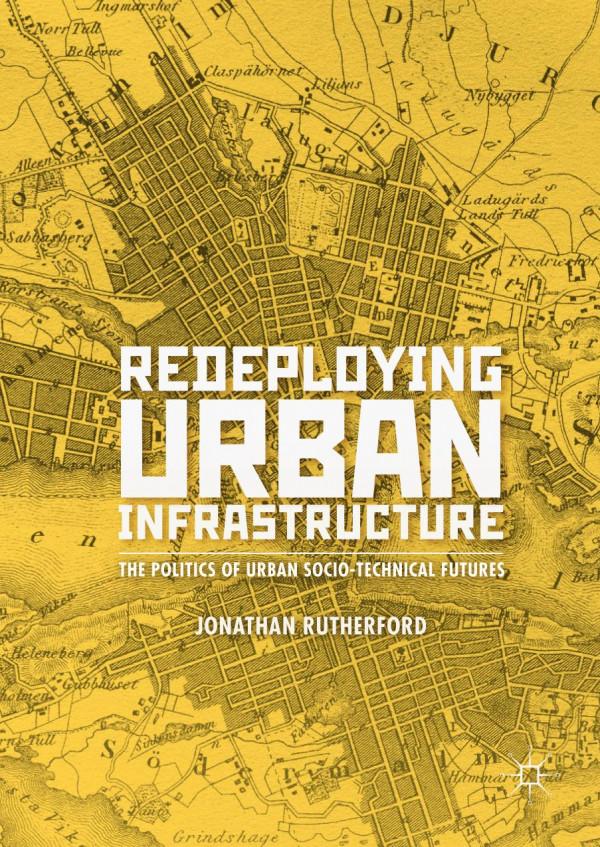
Redeploying Urban Infrastructure: The Politics of Urban Socio-Technical Futures 1st ed. 2020 Edition Jonathan Rutherford
https://ebookmass.com/product/redeploying-urban-infrastructurethe-politics-of-urban-socio-technical-futures-1sted-2020-edition-jonathan-rutherford/

Planning and Urban Design Standards 2nd Edition
https://ebookmass.com/product/planning-and-urban-designstandards-2nd-edition/
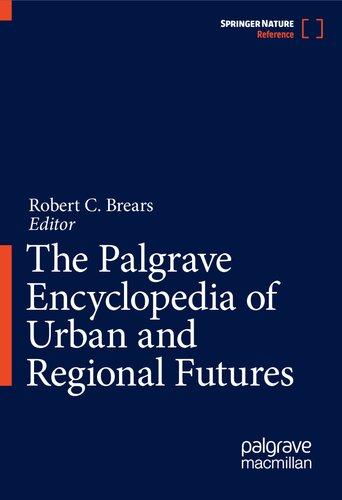
The Palgrave Encyclopedia of Urban and Regional Futures
Robert Brears
https://ebookmass.com/product/the-palgrave-encyclopedia-of-urbanand-regional-futures-robert-brears/
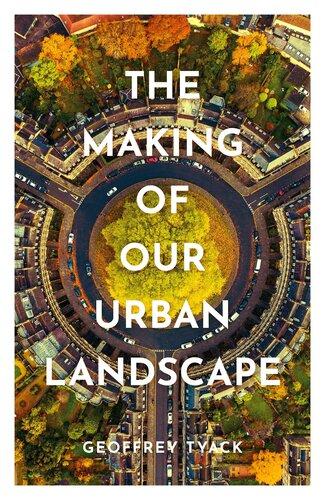
The Making of Our Urban Landscape Geoffrey Tyack
https://ebookmass.com/product/the-making-of-our-urban-landscapegeoffrey-tyack-2/
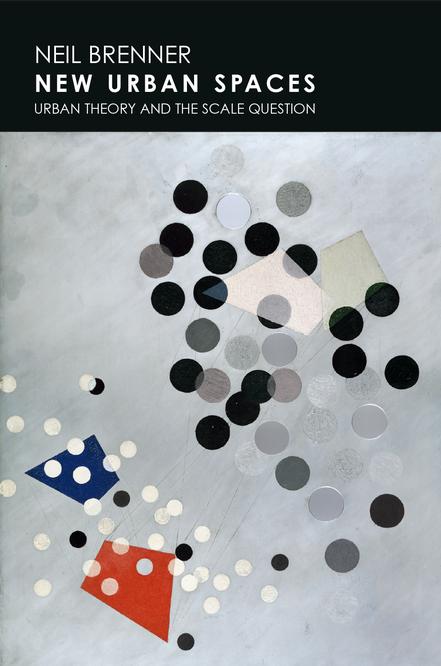
New Urban Spaces
ALSO BY NEIL BRENNER
Critique of Urbanization: Selected Essays Implosions/Explosions: Towards a Study of Planetary Urbanization (editor) Cities for People, Not for Profit: Critical Urban Theory and the Right to the City (coeditor, with Peter Marcuse and Margit Mayer)
New State Spaces: Urban Governance and the Rescaling of Statehood Spaces of Neoliberalism: Urban Restructuring in North America and Western Europe (coeditor, with Nik Theodore)
Neil Brenner is Professor of Urban Theory, Graduate School of Design, Harvard University.
New Urban Spaces
Urban Theory and the Scale Question
Neil Bre NNer
Oxford University Press is a department of the University of Oxford. It furthers the University’s objective of excellence in research, scholarship, and education by publishing worldwide. Oxford is a registered trade mark of Oxford University Press in the UK and certain other countries.
Published in the United States of America by Oxford University Press 198 Madison Avenue, New York, NY 10016, United States of America.
© Oxford University Press 2019
All rights reserved. No part of this publication may be reproduced, stored in a retrieval system, or transmitted, in any form or by any means, without the prior permission in writing of Oxford University Press, or as expressly permitted by law, by license, or under terms agreed with the appropriate reproduction rights organization. Inquiries concerning reproduction outside the scope of the above should be sent to the Rights Department, Oxford University Press, at the address above.
You must not circulate this work in any other form and you must impose this same condition on any acquirer.
Library of Congress Cataloging-in-Publication Data
Names: Brenner, Neil, author.
Title: New urban spaces : urban theory and the scale question / Neil Brenner. Description: New York, NY : Oxford University Press, 2019. | Includes bibliographical references and index. |
Identifiers: LCCN 2018045716 (print) | LCCN 2018047672 (ebook) | ISBN 9780190627218 (updf) | ISBN 9780190627225 (epub) | ISBN 9780190627195 (pbk.) | ISBN 9780190627188 (hardcover)
Subjects: LCSH: Urbanization. | Urban policy.
Classification: LCC HT361 (ebook) | LCC HT361 B723 2019 (print) | DDC 307.76—dc23
LC record available at https://lccn.loc.gov/2018045716
9 8 7 6 5 4 3 2 1
Paperback printed by WebCom, Inc., Canada
Hardback printed by Bridgeport National Bindery, Inc., United States of America
For Ignacia, Ivan, and Izar
TABLE OF CONTENTS
List of Figures ix
List of Abbreviations xi
1 Openings: The Urban Question as a Scale Question? 1
2 Between Fixity and Motion: Scaling the Urban Fabric 46
3 Restructuring, Rescaling, and the Urban Question 87
4 Global City Formation and the Rescaling of Urbanization 115
5 Cities and the Political Geographies of the “New” Economy 171
6 Competitive City-Regionalism and the Politics of Scale 206
7 Urban Growth Machines—But at What Scale? 233
8 A Thousand Layers: Geographies of Uneven Development 256
9 Planetary Urbanization: Mutations of the Urban Question 300
10 Afterword: New Spaces of Urbanization 334
Acknowledgments 395 Bibliography 401 Index 437
LIST OF FIGURES
1.1 Organizational structure and logic of the book 22
4.1 Rescaling the European urban hierarchy 142
4.2 Urban development, state space, and the world economy, 1950–2000 150
5.1 Spatial Keynesianism and the political regulation of uneven development 185
5.2 Post-Keynesian rescaling strategies and the new politics of uneven development 195
5.3 State strategies and the political regulation of uneven development: a schematic periodization of the Western European case 203
7.1 The multiscalar historical political geographies of urban growth machines in the United States 248
8.1 Some key dimensions of sociospatial relations 264
8.2 Social space as mille-feuille? 267
8.3 Geographies of uneven spatial development under capitalism 268
8.4 Key dimensions of uneven spatial development under capitalism 289
9.1 The “urban age” as a branding device 310
9.2 The “urban age” as a dramatic metanarrative 311
10.1 Some useful distinctions for deciphering contemporary mutations of the urban question 345
10.2 The urban/rural interface as a function of agrarian land use 348
10.3 The urbanization of the world? The United Nations’ demographic vision 349
10.4 Doxiadis’s speculative vision of a planetary urban fabric 357
10.5 The extended metropolis in Asia 358
10.6 Concentrated urbanization in London, 1820–1962 359
10.7 Commuting zones and the concentration of the urban fabric 360
10.8 Veins of the urban fabric: worldwide transportation infrastructures 362
10.9 Urbanization of the oceans? 367
10.10 Space junk as an outer layer of the urban fabric? 368
10.11 Neoliberal territorial design? The IIRSA project vision for Latin America 370
10.12 Toward an investigation of the planetary urban fabric 387
LIST OF ABBREVIATIONS
APS Advanced producer services
BRI Belt and Road Initiative
BRICS Brazil, Russia, India, China, South Africa
COSIPLAN South American Council of Infrastructure and Planning (Consejo Suramericano de Infrastructura y Planeamiento)
DMIC Delhi-Mumbai Industrial Corridor
EU European Union
GIS Geographic information systems
GLC Greater London Council
ICTs Information and communications technologies
IFCs International financial centers
IIRSA Initiative for the Integration of Regional Infrastructure in South America (Iniciativa para la Integración de la Infraestructura Regional Suramericana)
IMF International Monetary Fund
ISI Import-substitution industrialization
OECD Organisation for Economic Co-operation and Development
NAFTA North American Free Trade Agreement
NGOs Nongovernmental organizations
NIDL New international division of labor
nNIDL New new international divisions of labor
NUA New urban agenda
RCSRs Rescaled Competition State Regimes
SDGs Sustainable Development Goals
SEM Single European Market
SEZ Special economic zone
SMEs Small and medium-sized enterprises
STS Science and technology studies
TNCs Transnational corporations
TPSN Territory place scale network
UN United Nations
UNESCO
United Nations Educational, Scientific, and Cultural Organization
UPDs Urban development projects
USD Uneven spatial development
WCA World city archipelago
xii | List of Abbreviations
New Urban Spaces
Openings: The Urban Question as a Scale Question?
For much of the tweNtieth ceNtury, the field of urban studies defined its research object through a series of explicit or implied geographical contrasts. Even as debates raged regarding how best to define the specificity of urban life, this realm was almost universally demarcated in opposition to two purportedly nonurban zones—the suburban and the rural. Labels have changed for each term of this opposition, as have researchers’ understandings of how best to conceptualize its basic elements and the nature of their articulation. Yet, across otherwise divergent epistemological, methodological, and political traditions, most of twentieth-century urban studies rested upon the underlying assumption that cities represent a particular type of territory that could be defined in opposition to other, differently configured territories that lay beyond or outside its boundaries.
This vision of the urban was famously and precisely crystallized in Ernest Burgess’s classic concentric rings diagram from 1921, in which “the” city (actually a cipher for early twentieth-century Chicago) was defined as a series of neatly delineated territorial zones stretching outward from a geometrically positioned center into suburbia and, ultimately, toward an empty horizon of the countryside.1 Beginning almost immediately after its publication,
1 Robert Park and Ernest Burgess, eds., The City (Chicago: University of Chicago Press, 1967 [1925]).
Burgess’s model was criticized and reformulated. Some scholars redrew the contours of the diagram to capture more accurately the internal spatial patterning of city life; others questioned the theory of human ecology on which it was grounded. Nonetheless, even amid these variegated research initiatives, Burgess’s vision of urban space epitomized the metageographical unconscious—a hidden yet nearly all-pervasive framework of assumptions regarding spatial organization—that underpinned much of twentiethcentury urban studies. Across otherwise divergent politico-intellectual traditions, the city was conceived, at core, as a bounded territorial area whose specificity could be most effectively grasped by contrasting it to other areas from which it was presumed to be distinct. Until relatively recently, this underlying assumption served as an epistemological bedrock for the entire field of urban studies, not only within the venerable Chicago school tradition that Burgess helped to establish, but even within more radical or critical scholarly traditions, including Marxism, that sought explicitly to transcend this tradition.2
In effect, this amounted to a horizontal cartography of the urban question. Modern capitalism was envisioned as an extended territorial landscape on which different types of settlement space (urban, suburban, rural) were juxtaposed, with greater or lesser degrees of coherence, discretenesss, and boundedness, to create a patchwork quilt of areal differentiation. This mapping can be understood as territorial in the specific sense that, like the political jurisdictions of the modern Westphalian interstate system, its components were assumed to be bounded, contiguous, nonoverlapping, and encompassing.3 The demarcations separating urban, suburban, and rural spaces were understood to shift historically, but the spaces themselves
2 Neil Brenner and Christian Schmid, “Towards a New Epistemology of the Urban?,” CITY 19, no. 2–3 (2015): 151–82; Neil Brenner and Christian Schmid, “The ‘Urban Age’ in Question,” International Journal of Urban and Regional Research 38, no. 3 (2013): 731–55; Neil Brenner, “Urban Revolution?,” in Critique of Urbanization: Selected Essays (Basel: Bauwelt Fundamente/ Birkhäuser Verlag, 2016), 192–211; and Neil Brenner, ed., Implosions/Explosions: Towards a Study of Planetary Urbanization (Berlin: Jovis, 2014).
3 The classical theorization of this Westphalian conception of territory is John Gerard Ruggie, “Territoriality and Beyond: Problematizing Modernity in International Relations,” International Organization 47, no. 1 (1993): 139–74. See also, foundationally, John Agnew and Stuart Corbridge, Mastering Space: Hegemony, Territory, and International Political Economy (New York: Routledge, 1995). For further elaborations on the rich, polyvalent, and contested concept of territory in modern social, political, and spatial theory, see Stuart Elden, “Land, Terrain, Territory,” Progress in Human Geography 34, no. 6 (2010): 799–817; Stuart Elden, “Missing the Point: Globalisation, Deterritorialisation and the Space of the World,” Transactions of the Institute of British Geographers 30 (2005): 8–19; Neil Brenner and Stuart Elden, “Henri Lefebvre on State, Space, Territory,” International Political Sociology 3, no. 4 (2009): 353–77; and Christian Schmid, “The
were assumed to remain discreet (defined with reference to their internally specific features), distinct (geographically separated from one another), exclusive (encompassing the entirety of a zone), and universal (abiding, transcontextual features of human settlement).
During the mid- to late twentieth century, as the field of urban studies matured and evolved, several subterranean theoretical explorations began to unsettle the prevalent metageographical unconscious of urban studies, and thus to suggest the possibility of alternative conceptualizations of the field, its research focus, and its methods. One of the most important strategies to this end, which had been pioneered as early as the 1930s but which was not broadly consolidated until the early 1990s, entailed demarcating the urban not as a territory, but as a scale. In this alternative approach, urban space was delineated not through a horizontal contrast of cities to other (suburban or rural) settlement zones, but instead through a vertical positioning of urban scales within dynamically evolving, multitiered organizational-geographical configurations. In addition to the urban scale, such configurations were generally assumed to include at least three other key scales—the regional, the national, and the worldwide or global. Sometimes other scales were also considered—for instance, the body, the neighborhood, the local, the metropolitan, the supranational, and the continental.
In each case, the urban was conceptualized less as a bounded areal unit— the container of the city—than as a sociospatial relation embedded within a broader, dynamically evolving whole. It was constituted not through the demarcation of a territorial area, but through the crystallization of a sociospatial positionality within a broader, multiscalar framework of relationships. As such, the urban was understood to entail determinate sociospatial operations, practices, contours, and parameters, but these were thought to evolve fluidly, sometimes dramatically, within the larger framework of interscalar relationships in which they were enmeshed. The relationships in question— economic, institutional, political, cultural, ecological—encompassed many scales while also provisionally weaving them together to forge historically specific, temporarily stabilized interscalar configurations. To be sure, these emergent scalar explorations diverged, sometimes drastically, in their specific definitional framings of the urban phenomenon. Despite this, they shared a basic concern to conceptualize the urban not as a unit or type of settlement space, but as a vibrant force field of sociospatial practices defined through its relational embeddedness and shifting positionality within
Urbanization of the Territory: On the Research Approach of ETH Studio Basel,” in Territory: On the Development of Landscape and City, ed. ETH Studio Basel (Zurich: Park Books, 2016), 22–48.
a broader, interscalar framework of patterned, regularized sociospatial interdependencies.
Early experiments with a scalar approach to urban questions, articulated from diverse politico-epistemological standpoints, were implicit within several heterodox traditions of midcentury and postwar urban geography, planning, and regional science, from Walter Christaller’s central place theory, Robert Dickinson’s studies of urban settlement systems, and Jean Gottmann’s approach to megalopolis formation to the wide-ranging studies of urban boundaries, systems, and hierarchies produced by scholars such as Brian Berry, John Friedmann, and Allan Pred.4 Whatever their differences of conceptual grammar, methodology, and research focus, such approaches shared a concern to transcend narrowly territorialist, areal, or localist understandings of the urban, and thus to explore the broader sociospatial configurations produced through the dynamics of urbanization. However, even as they tentatively began to explore the implications of a scalar problematique, the spatial imaginaries of these broadly heterodox postwar explorations were mainly focused on other dimensions of urbanization processes—nodality and agglomeration, for instance, or connectivity and networking, or the functional differentiation of territories. It was only in the 1980s, with the development of a new “lexicon of geographical scale” (Neil Smith) in the field of historicalmaterialist geopolitical economy, that scholars began directly, systematically, and reflexively to elaborate the elements of a “scalar turn” for urban theory.5
4 See, for example, Walter Christaller, Central Places in Southern Germany, trans. Carlisle W. Baskin (Englewood Cliffs, NJ: Prentice Hall, 1966 [1933]); Robert E. Dickinson, City and Region: A Geographical Interpretation (London: Routledge and Kegan Paul, 1964); Jean Gottmann, Megalopolis: The Urbanized Northeastern Seaboard of the United States (Cambridge, MA: MIT Press, 1961); Brian Berry and Frank E. Horton, eds., Geographic Perspectives on Urban Systems (Englewood Cliffs, NJ: Prentice Hall, 1970); John Friedmann and Clyde Weaver, Territory and Function: The Evolution of Regional Planning (Berkeley: University of California Press, 1979); and Allan Pred, City-Systems in Advanced Economies (London: Hutchinson, 1977).
5 Neil Smith had begun to elaborate the elements of this scalar turn in his classic volume, Uneven Development Nature, Capital and the Production of Space (New York: Blackwell, 1984). He subsequently elaborated some of its key elements in a series of essays and articles, including Neil Smith, “Homeless/Global: Scaling Places,” in Mapping the Futures, ed. Jon Bird, Barry Curtis, Tim Putnam, and Lisa Tickner (New York: Routledge, 1993), 87–119; Neil Smith, “Geography, Difference and the Politics of Scale,” in Postmodernism and the Social Sciences, ed. Joe Doherty, Elspeth Graham, and Mo Malek (New York: St. Martin’s Press, 1992), 57–79; Neil Smith, “Remaking Scale: Competition and Cooperation in Prenational and Postnational Europe,” in Competitive European Peripheries, ed. Heikki Eskelinen and Folke Snickars (Berlin: Springer Verlag, 1995), 59–74; and Neil Smith and Dennis Ward, “The Restructuring of Geographical Scale: Coalescence and Fragmentation of the Northern Core Region,” Economic Geography 63, no. 2 (1987): 160–82. Another early engagement with scale questions in historicalgeographical materialist social theory was by Peter J. Taylor, especially in his book, Political
Scale had, of course, long been a key concept in human geography, but its intellectual foundations were reinvented as of the 1980s in conjunction with emergent concerns with worldwide capitalist restructuring and associated debates on “globalization.”6 Within this emergent literature on the “new political economy of scale,” all scales, whether urban or supraurban, were understood to be socially produced, politically contested, and thus historically malleable.7 Moreover, such scaling and rescaling processes were now shown to be closely intertwined with broader processes of political-economic restructuring, including geoeconomic integration, the remaking of statehood, and the production of new patterns of urban and regional development. This meant that any scalar hierarchy—and, indeed, any putatively fixed unit, level, stratum, or tier within it—had a rich historical geography that was (1) mediated through power relations, state regulatory strategies, and sociopolitical struggles and (2) potentially mutable through sociopolitical contestation. Deciphering such volatile scalar geographies of power and struggle was thus an essential task for critical research, not least within the field of critical urban studies. Subsequently, alongside recently reinvigorated notions of place, territory, and space, the new lexicon of geographical scale came to offer urbanists a powerful new conceptual tool through which to investigate, in rigorously relational terms, the changing geographies of urbanization, both historically and under contemporary conditions.
The explosion of interest in the new political economy of scale dovetailed with the development of what is today known as global city theory and, more generally, with the elaboration of critical approaches to globalized
Geography: World-Economy, Nation-State and Locality (New York: Longman, 1985). See also Peter J. Taylor, “A Materialist Framework for Political Geography,” Transactions of the Institute of British Geographers 7 (1982): 15–34; and Peter J. Taylor, “Geographical Scales within the World-Economy Approach,” Review 5, no. 1 (1981): 3–11.
6 See, for example, Erik Swyngedouw, “The Mammon Quest: ‘Glocalisation,’ Interspatial Competition, and the Monetary Order: The Construction of New Scales,” in Cities and Regions in the New Europe, ed. Mick Dunford and Grigoris Kafkalas (London: Belhaven Press, 1992), 39–68; Erik Swyngedouw, “The Heart of the Place: The Resurrection of Locality in an Age of Hyperspace,” Geografiska Annaler B 71 (1989): 31–42; Erik Swyngedouw, “Neither Global nor Local: ‘Glocalization’ and the Politics of Scale,” in Spaces of Globalization, ed. Kevin Cox (New York: Guilford Press, 1997), 137–66; Alain Lipietz, “The Local and the Global: Regional Individuality or Interregionalism?,” Transactions of the Institute of British Geographers 18, no. 1 (1993): 8–18; and Jamie Peck and Adam Tickell, “Searching for a New Institutional Fix: The After-Fordist Crisis and the Global-Local Disorder,” in Post-Fordism: A Reader, ed. Ash Amin (Cambridge, MA: Blackwell, 1994), 280–315.
7 For a useful overview of this literature and associated debates, see Roger Keil and Rianne Mahon, eds., Leviathan Undone? The New Political Economy of Scale (Vancouver: University of British Columbia Press, 2010).
urbanization.8 Insofar as the connections between geoeconomic restructuring and the remaking of urban space have figured crucially in studies of globalizing cities, questions of scale have been central to key aspects of theory, methodology, and concrete research in this field of inquiry. Initially, this took the form of investigations of the so-called global/local nexus, in which scholars debated how best to conceptualize and investigate the changing modes of insertion of urban spaces into global circuits of capital, commodities, and labor. Subsequently, more differentiated approaches to scalar questions, rescaling processes, and the politics of scale were developed. In contrast to then-prevalent discourses predicting the end of geography and the construction of a borderless world, the process of “globalization” was now recast as an uneven, contested, and ongoing rearticulation of interscalar relations in conjunction with the destabilization of historically entrenched, nationally organized formations of capitalism and their associated regulatory institutions. This conceptual reorientation enabled scholars to investigate how cities and urban systems were being (re)inserted into worldwide divisions of labor and their changing positionalities in relation to a broad range of political-economic rescaling processes, including the restructuring of national states and national economies. Questions of territorial regulation—a key terrain and medium of rescaling—were thus now also systematically integrated into debates on emergent scalar geographies of urban life. Against this background, scholars of contentious politics also began to explore the implications of ongoing rescaling processes for patterns of sociopolitical mobilization and, more specifically, for the dynamics of urban social movements.
With the further refinement of scalar concepts during the 1990s, major subfields of urban research—including studies of urban hierarchy, urban form, urban politics, urban governance, urban economic restructuring, gentrification, sociospatial polarization, urban social movements, and urban political ecology—were being recast in reflexively scalar terms. Scale was now recognized as a key dimension of urbanization, and meanwhile there was an impressive outpouring of research on cities as arenas and targets for diverse forms of rescaling. The classic concern with urban place-making and urban territorial organization remained robust, of course, and an emergent research agenda on worldwide interurban connectivity likewise began to generate considerable interest, perhaps most famously due to Manuel Castells’s
8 For a general overview of this literature, see Neil Brenner and Roger Keil, eds., The Global Cities Reader (New York: Routledge, 2006). Key contributions to this literature are discussed at length in Chapter 4.
influential theories of the network society.9 Nonetheless, by the early 2000s, the question of scale had become a pervasive conceptual and methodological reference point in major strands of urban theory and research, across otherwise quite diverse fields of investigation. Was the urban question being transformed into a scale question?
Threads of a Problematique
This book is devoted to a systematic exploration of the broad problematique associated with the reflexive mobilization of scalar narratives, scalar categories, and scale-attuned methods in the field of critical urban studies since the early 1990s. Its guiding questions are the following: In what sense can the urban question be reframed as a scale question? What conceptualizations of scale—and of the urban scale in particular—are most appropriate for such an exploration? What are the theoretical, methodological, and empirical consequences of such a scalar reframing? How does a scalar analytics transform our understanding of the unit, site, and object of urban research? To what degree, and in what ways, can and should “the city” remain a central analytical construct and empirical focal point in a scale-attuned approach to the urban question? What are the implications of scale-attuned approaches to urban theory and research for interpretations of contemporary patterns of urban restructuring? What are the implications of such approaches for the investigation of restructuring processes within specific places, regions, and territories? Finally, what are the appropriate conceptual parameters for scalar approaches to urban questions? In other words, are there limits to scale as an explanatory, interpretive, and descriptive category?
Aside from this opening chapter, earlier versions of the writings included in this book have been published previously, mostly in journals of urban studies, geography, sociospatial theory, and geopolitical economy, as well as in edited volumes devoted to those research fields. Chapters 2, 9, and 10 have been completely rewritten and significantly expanded. All other chapters have also been revised substantially to enhance analytical precision, to improve stylistic clarity, and to weave together more tightly the common threads of argumentation, conceptualization, and inquiry that connect them. New bibliographic references have also been selectively added to reflect more recent research and lines of scholarly debate. However, I have resisted the temptation to modify the main substantive arguments of the texts included
9 Manuel Castells, The Rise of the Network Society (Cambridge, MA: Blackwell, 1996).
here, to update the empirical investigations upon which they build, or to present them in the form of an encompassing theoretical synthesis. In thus proceeding, I have sought to preserve the analytical integrity and contextual specificity of each text while also highlighting the fluid, exploratory nature of my own, still-ongoing efforts to develop appropriate conceptual tools, scalar and otherwise, for deciphering emergent urban transformations and, more generally, for demarcating the relentlessly mutating terrain of the urban question.
This procedure reflects two intentions. First, this book brings together an otherwise widely dispersed series of writings that have explored a shared theoretical problematique on scale questions in contemporary urban theory while also seeking to reconceptualize the spatial parameters of urban research in ways that help illuminate the rapidly mutating landscapes of urbanization that have been crystallizing in recent decades. In so doing, my goal is to put into clear relief the main intellectual concerns, conceptual orientations, methodological commitments, and research agendas that have animated my explorations of this problematique, and that continue to guide my work. Accordingly, I have selected texts that most clearly articulate the key elements of my evolving approach to such issues in relation to specific terrains of investigation and arenas of conceptual experimentation. Many of these studies have involved more concrete modes of investigation, especially in relation to the remaking of urban, regional, and territorial governance in the North Atlantic zone. Others have involved engagements with parallel theoretical or methodological debates in urban studies on, among other topics, post-Fordism, territorial regulation, global cities, neoliberalization, comparative methods, the politics of space, the right to the city, and, most recently, planetary urbanization. All have entailed a systematic elaboration of scalar epistemologies, concepts, methods, and cartographies to decipher key aspects of emergent urbanization processes.
Second, the organizational architecture of this volume reflects my understanding, and my practice, of urban theorizing 10 Consistent with the dialectical traditions of social theory in which I situate my work, I have never intended my contributions to debates on the urban question to “lock in” a fixed, complete, or comprehensive interpretive framework.11 Indeed, because
10 On the practice, process, and stakes of theorizing in urban studies, see Jennifer Robinson, “New Geographies of Theorizing the Urban: Putting Comparison to Work for Global Urban Studies,” in The Routledge Handbook on Cities of the Global South, ed. Susan Parnell and Sophie Oldfield (London: Routledge, 2014), 57–70.
11 Neil Brenner, Critique of Urbanization: Selected Essays (Basel: Bauwelt Fundamente/Birkhäuser Verlag, 2016).
they are thoroughly enmeshed within the contradictory, restlessly mutating sociospatial relations they aspire to illuminate, dialectical conceptualizations of urban questions are not, and cannot ever be, a definitive “capture” of an ontologically fixed condition. Rather, they represent dynamically evolving, partial, and incomplete efforts to decipher the endlessly churning maelstrom of capitalist urbanization in which theorists, like all social researchers, are ineluctably situated. Consequently, as Jennifer Robinson explains, urban theory “should be practiced and conceptualized as radically revisable,” not least because its site and focal point, the urban, is “a political and practical achievement . . . made through political contestation.”12 In precisely this sense, my writings on scale and the urban question are intended as part of what Robinson has appropriately characterized as a collective endeavor to “destabilize the terms of the urban and set in motion conversations towards its on-going reinvention.”13 They offer no more than an exploratory theoretical orientation a basis for posing and investigating a range of questions related to conceptualizations of the urban, and for tracking their variegated methodological, interpretive, and political implications across sites, contexts, and territories. For this reason, it seems most consonant with my own particular way of “doing theory” to present some of its main results to date in the relatively fluid, open-ended format of this book.
Several chapters intersect in their articulation of certain core theoretical arguments—for instance, regarding the specificity of scale (or, more precisely, scaling/rescaling processes) as one among several key dimensions of sociospatial relations under capitalism; on the intensification of rescaling processes since the geoeconomic crises of the 1970s; on the limits and blind spots of methodologically localist or city-centric approaches to urban research; on the consequences of reflexively multiscalar epistemologies, concepts, and methods for the demarcation of urban studies as a research field; on the key role of state spatial strategies in mediating and animating the production of new urban spaces; on the dialectical interplay between post-1970s patterns of urban restructuring and the production of postKeynesian state spaces; on the continued forward motion and ongoing, crisis-induced reconstitution of political strategies to rescale urban space; and on the methodological dangers of overextending scalar concepts beyond their proper domain of application. Rather than being merely repeated, however, these and other key strands of argumentation are interwoven across the
12 Robinson, “New Geographies of Theorizing the Urban,” 67.
13 Ibid.
book’s chapters, in relation to a range of scholarly literatures and research foci, in order to build—and to apply a scale-attuned approach to contemporary urban questions. In this way, the book’s main arguments emerge less through a linear unfolding than through the layering together of distinct yet interconnected critical investigations of a core problematique.
State Rescaling and the Urban Question
In exploring the centrality of scale questions in urban theory, this book devotes considerable attention to the role of state spatial strategies (and their changing scalar articulations) in mediating, managing, animating, and canalizing the remaking of urban space during successive cycles of capital accumulation and crisis formation. This analysis stands in stark contrast to influential strands of contemporary urban studies that bracket or background the state’s pervasive, multiscalar role in shaping and reshaping the urban process under capitalism—whether due to a one-sided methodological localism (often connected to an empirical focus on municipal governance arrangements), an embrace of problematic “state decline” arguments (often derived from uncritical discourses on “globalization”), or an equally questionable belief in the neoliberal ideology of self-regulating markets (which still pervades much of mainstream global urban discourse). Against such “state denialist” approaches, the conceptual framework developed in this book treats urban space and state space as intricately entangled, mutually coconstituting and conflictually coevolving formations of scale-differentiated sociospatial relations under modern capitalism.14 Building especially on the work of radical sociospatial theorists David Harvey and Henri Lefebvre, Chapter 2 develops this argument in abstract, theoretical terms while also broadly contextualizing it in relation to the historical geographies of capitalist development during the last 150 years, in which the institutional, infrastructural, and interscalar mesh connecting urban space and state space has been thickened considerably. Subsequent chapters explore the various ways in which state spatial strategies have shaped the production and transformation of urban space during the last four decades, in conjunction with multiscalar processes of neoliberal regulatory creative destruction.15
14 The concept of “state denial” is derived from Linda Weiss, The Myth of the Powerless State (London: Policy, 1998).
15 David Harvey, “Neoliberalism as Creative Destruction,” Annals of the American Academy of Political and Social Science 610 (2007): 22–44; Neil Brenner and Nik Theodore, “Cities and the
This is a theme I have explored extensively in earlier work, particularly in a previous book, New State Spaces. 16 In that context, I was likewise concerned with the interplay between urban restructuring and state restructuring, but the main explanandum of my investigation was the rescaling of state space. Accordingly, urban governance was treated as an analytical window through which to decipher the changing spatial and scalar selectivities of modern state power during the Fordist-Keynesian period and, subsequently, with the development of what I termed Rescaled Competition State Regimes (RCSRs). Several texts included in the present volume (especially Chapters 4, 5, and 6) are closely connected to that line of investigation, but their analytical focus here is precisely inverted. As its title indicates, the central concern of this book is the production of new urban spaces. Accordingly, processes of state rescaling (the “new state spaces” of my previous work) are considered mainly with reference to their variegated impacts on the capitalist urban fabric. As several chapters of this book argue, these impacts have been profound. New urban spaces have been actively forged through the aggressive, and often socially and politically regressive, rescaling of state space during the last four decades. More specifically, the production of neoliberalized regimes of urbanization has occurred in large measure through spatial and scalar transformations of statecraft that have extended, institutionalized, and normalized market discipline across the urban fabric while also targeting certain strategic sites within each territory for intensified transnational investment, advanced infrastructural development, and enhanced global connectivity. This has permitted certain metropolitan “islands,” as well as selected inter-metropolitan logistics corridors and enclaves of emergent hinterland industrialization, to be much more tightly interlinked across planetary space. However, it has also entailed an increasing splintering of the capitalist urban fabric as a whole, generally in ways that have eroded the isomorphic articulation of national territories and national urban systems that had been pursued within earlier regimes of spatial Keynesianism, national developmentalism, and urban managerialism.17
Geographies of ‘Actually Existing Neoliberalism,’” in Spaces of Neoliberalism, ed. Neil Brenner and Nik Theodore (Oxford: Blackwell, 2002).
16 Neil Brenner, New State Spaces: Urban Governance and the Rescaling of Statehood (New York: Oxford University Press, 2004).
17 The paradigmatic account of this “splintering” of the planetary urban fabric is Stephen Graham and Simon Marvin, Splintering Urbanism: Networked Infrastructures, Technological Mobilities and the Urban Condition (New York: Routledge, 2001).
One major consequence of this tendential scalar disarticulation of state space and the capitalist urban fabric has been to destabilize the entrenched centrality of the national scale as the encompassing “power container” of modern political-economic life, leading to a situation Chris Collinge has aptly described as a “relativization of scales.”18 Under conditions of scale relativization, as Bob Jessop has explained, the taken-for-grantedness of national space is undermined as the relations between global, supranational, national, and subnational scales of political-economic activity are systematically reshuffled; there is no hegemonic or dominant scale of sociospatial relations.19 Instead, the scalar configuration of key political-economic processes—including capital accumulation, territorial regulation, social reproduction, and political mobilization—becomes more fluid, more immediately subject to intense contestation, and thus more susceptible to the prospect of being reorganized, whether in incremental or in radical ways. This, in turn, undermines any isomorphism or convergence that may have, at least in tendential form, previously characterized the scalar geographies of such processes and associated patterns of uneven development, especially during the North Atlantic Fordist, national-developmentalist period in the second half of the twentieth century. Consequently, particularly since the 1980s, the vision of hierarchically structured, precision-nested scalar arrangements serving as a shared sociospatial meta-architecture for major political-economic processes has become increasingly obsolete. Instead, we have been experiencing a proliferation of more tangled, haphazardly intercalated, and unevenly patterned scalar arrangements across the planetary sociospatial landscape, each connected to specific political-economic operations, strategies, and struggles. Under these conditions, the capitalist urban fabric is no longer organized as an encompassing, worldwide grid of national city-systems, neatly subdivided into internal central place hierarchies, but is instead unevenly differentiated among variegated places, regions, territories, and landscapes whose mottled connective tissue more closely resembles that of an intricately stitched latticework than a simple pyramid, hierarchy, or grid.
18 See Chris Collinge, “Spatial Articulation of the State: Reworking Social Relations and Social Regulation Theory” (unpublished manuscript, Centre for Urban and Regional Studies, Birmingham, 1996). On the notion of the national state (and thus the national scale) as a power container, see Anthony Giddens, A Contemporary Critique of Historical Materialism (Berkeley: University of California Press, 1985).
19 Bob Jessop, “The Crisis of the National Spatio-Temporal Fix and the Ecological Dominance of Globalizing Capitalism,” International Journal of Urban and Regional Research 24, no. 2 (2000): 323–60.
Despite their apparently unstructured complexity, their intense institutional differentiation, their spatially fragmenting impacts, and their aggressively polarizing, market-disciplinary logics, these processes of scale relativization have not been associated with a diminished role for state institutions in the shaping and reshaping of the capitalist urban fabric. The scalar geographies of state power have shifted in epochally significant ways, but state spatial strategies continue to mediate, animate, and canalize urbanization, and its associated crisis tendencies, in pervasively powerful ways, across contexts and territories, worldwide. A key challenge for urban theorists, therefore, is to develop new conceptual frameworks through which to decipher the state’s intensive, if perpetually evolving, roles in the structuration of urbanization processes under the scale-relativized worldwide conditions of the post-1980s period. This requires not only a spatialized, scale-attuned reconceptualization of statehood—a task to which I devoted much of New State Spaces—but also, as I contend in what follows, a rather fundamental retheorization of urbanization itself.
The Fabric of Urbanization
One of the most essential, if also controversial, epistemological implications of the combined scale-theoretical and state-theoretical approach developed here is further to decenter what geographer Terry McGee concisely described nearly a half century ago as “city dominant” approaches to the modern urban condition.20 In more recent years, such approaches have been aptly characterized under the rubric of “methodological cityism”: their hallmark is (1) to presuppose unreflexively the “city”—generally understood as a territorially bounded, sociologically distinctive spatial cluster—as a pregiven, self-evident, or universal unit of analysis and, concomitantly, (2) to conceive the entirety of non-city space, by definition, as a non-urban or “rural” zone.21
20 Terry McGee, “The Urbanization Process: Western Theory and Third World Reality,” in The Urbanization Process in the Third World (London: Bell and Sons, 1971), 12–34.
21 The concept of methodological cityism was developed by Hillary Angelo and David Wachsmuth in their critical reformulation of recent work in urban political ecology. See their foundational article, “Urbanizing Urban Political Ecology: A Critique of Methodological Cityism,” International Journal of Urban and Regional Research 39, no. 1 (2015): 16–27. As conceived here, this methodological tendency entails not only a naturalization of the “city” as a unit of analysis but the unreflexive separation of that unit, both in analytical and in geographical terms, from a putatively exterior, “non-city” domain. For additional reflections on the ideological dimensions of the city concept, see Hillary Angelo, “From the City Lens toward Urbanisation as a Way of Seeing: Country/City Binaries on an Urbanising Planet,” Urban Studies 54, no. 1 (2016): 158–78; David Wachsmuth, “City as Ideology: Reconciling the Explosion of the City
One of the more unorthodox, if not downright heretical, arguments of this book, which builds strongly upon a thesis proposed by Henri Lefebvre in the 1970s, is that the urban condition—and, more generally, the process of urbanization under modern capitalism—cannot be reduced to the sociospatial entities that are conventionally labeled as “cities.”22
The city, I argue, is only one element within, and expression of, the multiscalar, polymorphic, and restlessly mutating geographies of capitalist urbanization. These are constituted through the relentless implosion of sociospatial processes into dense centers of population, infrastructure, and economic activity and through the equally dynamic explosion of sociospatial relations across vast territories, landscapes, and ecologies that are likewise being perpetually enclosed, operationalized, industrialized, and creatively destroyed in support of capital’s voracious, profit-driven metabolism, whether for purposes of industrialized agriculture, extraction, energy generation, logistics, waste processing, environmental management, or otherwise.23 Consequently, especially with the intensifying, accelerating, and increasingly worldwide industrialization of capital during the course of the twentieth century, the city and the urban—two of the foundational keywords of urban studies—must be analytically distinguished. Doing so, I submit, permits a more theoretically precise, historically and contextually nuanced understanding of both terms of this relationship and its ongoing historical evolution under modern capitalism.
While several chapters of this book devote extensive attention to the globally networked metropolitan islands of the “world city archipelago,” the scalar analytics thereby developed also subvert the conventional definitional equation of urbanization with the growth of cities as specific, distinct, bounded, and localized spatial units, as well as the ontology of “naïve objectivism” that
Form with the Tenacity of the City Concept,” Environment and Planning D: Society and Space 32, no. 1 (2014): 75–90; David Cunningham, “The Concept of Metropolis: Philosophy and Urban Form,” Radical Philosophy 133 (September/October 2005): 13–25; and Kanishka Goonewardena, “The Urban Sensorium: Space, Ideology and the Aestheticization of Politics,” Antipode 37, no. 1 (2005): 46–71. More generally, on the production of spatial ideologies, see Henri Lefebvre, “Reflections on the Politics of Space,” in State, Space, World, ed. Neil Brenner and Stuart Elden (Minneapolis: University of Minnesota Press, 2009 [1970]), 167–84.
22 Henri Lefebvre, The Urban Revolution, trans. Robert Bononno (Minneapolis: University of Minnesota Press, 2003 [1970]).
23 See Brenner and Schmid, “Towards a New Epistemology”; Brenner, “Urban Revolution?”; Brenner, Implosions/Explosions; Martín Arboleda, “In the Nature of the Non-City: Expanded Infrastructural Networks and the Political Ecology of Planetary Urbanisation,” Antipode 48, no. 2 (2016): 233–51; and Martín Arboleda, “Spaces of Extraction, Metropolitan Explosions: Planetary Urbanization and the Commodity Boom in Latin America,” International Journal of Urban and Regional Research 40, no. 1 (2016): 96–112.
is generally presupposed within such definitions.24 To the degree that studies of urban questions focus primarily or exclusively on these metropolitan islands and their translocal connections, they tend to bracket the broader, politically mediated transformations of interscalar relations from which such apparently localized spaces have been wrought, and which they have, in turn, actively accelerated and intensified. Crucially, however, the point of this critique of methodological cityism is not to deny the importance of agglomeration economies, nodal connectivity, spatial density, or local politics to the dynamics of urbanization, or to suggest that large, dense metropolitan areas do not exist or do not matter for political-economic processes under capitalism. The claim, rather, is that such conditions, processes, and terrains of struggle can only be understood adequately within a broader, multiscalar field of sociospatial relations that constitutes and continually reweaves the capitalist urban fabric as a whole. We need, in other words, a multiscalar yet territorially differentiated conceptualization of urban space itself, and of the geographies of urbanization, to decipher (1) the variegated patterns and scales in which the sociospatial relations of agglomeration are produced, contested, and reworked and (2) the evolving supralocal crystallizations, parameters, and consequences of urbanization processes under capitalism.
The Lefebvrian notion of the capitalist urban fabric (le tissu urbain), which is elaborated at length in Chapter 2, offers a solid foundation for such a multiscalar reconceptualization, one that includes agglomeration processes (the moment of implosion) as well as the construction and continual reorganization of operational landscapes that support and, quite literally, metabolize such processes (the moment of explosion). Subsequent chapters investigate the fluidly mutating, constitutively uneven geographies of the capitalist urban fabric in the North Atlantic zone and beyond since the 1970s and the role of state spatial strategies in mediating and animating those mutations. In thus proceeding, I also critically engage some of the major strands of methodological cityism that have infused prominent approaches to contemporary urban studies, especially within the scholarly literatures on global cities, urban entrepreneurialism, informational cities, the new regionalism,
24 On the world city “archipelago,” see Peter J. Taylor, World-City Network: A Global Urban Analysis (London: Routledge, 2004); and, more recently, David Bassens and Michiel van Meeteren, “World Cities and the Uneven Geographies of Financialization: Unveiling Stratification and Hierarchy in the World City Archipelago,” International Journal of Urban and Regional Research 40, no. 1 (2016): 62–81. On the problem of naïve objectivism in social science, see Andrew Sayer, Method in Social Science, 2nd ed. (London: Routledge, 1992). As Sayer explains, such approaches ignore the conceptual mediation of social life and presuppose the capacity of social researchers to capture the “facts” through pure induction.
